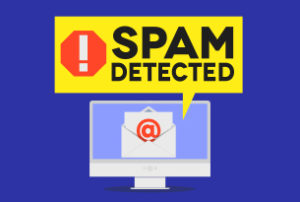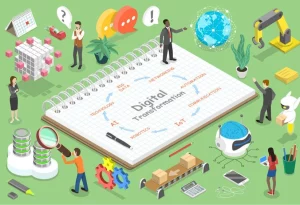Think about all the business pages on social networks, all the conversations that are happening about the brands you are connected with. More and more businesses are using web and Social Media in their decision-making process. With this in mind, websites are now required to do more than just credential the organization. They need to engage, build community, and do a bit of “edutainment” (educate the client on what you do while entertaining them to keep their interest). If you are ignoring this change, there is a good possibility that you are still using your website to simply broadcast. Below are 10 Social features that you can embed in your website to help transform your website from “static” to Social:
- Social Sharing (and analytics): This capability empowers your fans, followers, and readers to amplify your message beyond your website into the 500+ Social Media sites or in other words, go viral. This feature is not new. It has been around for decades e.g. a decade ago, we used to see Print icons, Email share icons along your web pages. Now, the feature is extended to the ocean of Social sites. AddThis and ShareThis are examples of a few providers of this feature. It also comes with analytics so you can track the viral effect of your content.
- Really Simple Syndication (RSS): According to Wikipedia, RSS is a family of web feed formats used to publish frequently changing content into a standardized format. The technology has been around for a while, however, it has become more important with the wave of social networks and the rapid adoption of smartphones. RSS allows the syndication of content to a number of social networks and can play a very important role in building native mobile apps.
- Social Media Logins: Do you think your target audience is sick of remembering multiple usernames and passwords? Then this feature is for you. This allows your user base to login using their Facebook/Twitter or LinkedIn accounts etc. This could make a great difference to associations or anyone having a membership site and looking to solve the issue of member engagement.
- Member Pictures from Social Sites: If you are responsible for supporting a membership site or manage a community of members, this feature again speaks to the issue of member engagement. Imagine, you have a member’s directory and finding it hard to get members to update their pictures. Using Gravatars or providing options for members to select their pictures from social sites (like LinkedIn) is an easy solution to avoid having members to upload their pictures on your members’ directory.
- Social Bookmarking: Social Bookmarking is a way for users to organize, and manage references to the content they like. If you are really into content marketing and have a lot of content on your website, providing social bookmarking options like StumbleUpon, Digg, del.icio.us, etc. can enable users to bookmark the content. This can improve the number of repeat visitors to your website. Adding a bookmark link can also help improve your search engine rankings as a number of social bookmarking networks are highly trusted by Google.
- Facebook Comments: One of the ways to improve engagement with your website is to use Facebook comments in addition to the comments feature provided by the underlying platform (e.g. WordPress). This not only makes it easy for users to leave comments but can also amplify the comments using the social power of Facebook. Click here for an example of Facebook comments.
- Twitter Feed: Creating a twitter wall is really useful if conducting events is integral to your marketing strategy. Adding a twitter feed on your website is only recommended if you are trying to build a twitter following. Otherwise, it is better to leave this because, in the majority of cases, social media is used to send traffic back to your website rather than the other way around.
- Social Media Events: This is the era of the internet. A number of events and even conferences are using social media to register guests or even host the event virtually. This not only refers to conducting an online event but also extending the life of a physical event in the virtual world. Leveraging the social features like Facebook events or post-event pictures increases the shelf life of the event and allows for the physical conversations to continue even after the event comes to an end. This also gives you a chance to engage your followers and amplify the impact of the event socially.
- Social Groups: There has been a big debate in using groups on Social Media networks (e.g. Facebook groups, LinkedIn groups, etc.) to host conversations (as opposed to internally hosted forums). If you are sensitive to the kind of conversations that can happen amongst your members or there is a concern or a regulatory constraint, then it makes sense for you to host your group internally. If there are no such constraints, supporting a community on social networks can take your business to the next level. Note that I am using the word “supporting” rather than “building”. This is because the communities already exist, the task is to create an environment where these can flourish. What you need to know is that supporting a group requires a huge amount of effort initially until it grows organically.
- Social Lead Capture: All efforts are useless if they don’t result in moving your business forward. From a marketing perspective, if you are not able to capture leads using social media, then all your efforts in social media are futile. Creating landing pages on your website and embedding them in Facebook tabs is one example of how you can capture leads from Facebook. You can also run highly targeted pay-per-click Facebook ads to not only improve awareness of your brand but also to capture the leads in your client relationship management (CRM) solution. Some CRM platforms e.g. Infusionsoft have add-on apps, like GroSocial, that can make the whole process smooth and easy to manage.
How many of these features are you currently leveraging on your website – if any? Of course, not all of these features would make sense for your business and your organization’s website, however, some of the above features are absolutely essential. And this is just the tip of the iceberg.
Ashish Malik is Partner, Client Services at 108 ideaspace inc., a firm that works in Web/Social Media/Marketing Automation strategy and implementation. A Certified Consultant, Ashish has helped several clients automate their sales and marketing as well as grow their business by implementing CRM. For more on Ashish Malik or 108 ideaspace, visit www.108ideaspace.com.
For more ideas on how to market your business, follow Ashish on Twitter @AshishMalik01.











